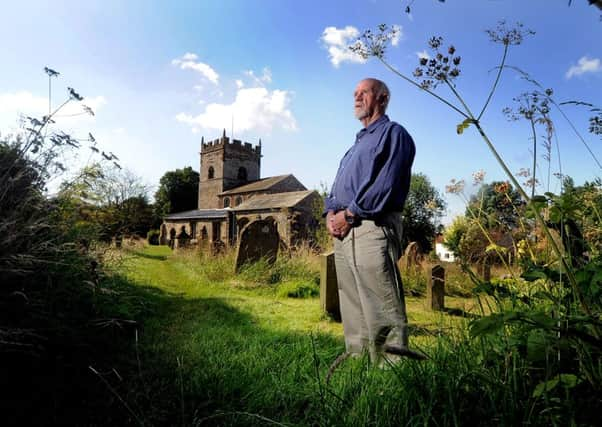Turbulent past of a quiet place of rest for boy prince


Believed by many to be a memorial to Edward of Middleham, the son of Richard III and Anne Neville, the weathered effigy has ignited controversy for decades.
And the sad story of the boy prince will be told once again during this year’s Yorkshire Medieval Festival.
Advertisement
Hide AdAdvertisement
Hide AdSt Helen and the Holy Cross, Sheriff Hutton, is one of seven churches which will explore the area’s rich Medieval heritage during the festival in August through Church Explorers, a free series of walks, tours, and hands-on activity days.
The church has a proud history from Norman and Plantagenet times with connections to Richard III, his son and the Nevilles, who held the north of England in the 15th Century.
Roy Thompson, churchwarden (CRT) at St Helen and the Holy Cross, said: “There are five significant family medieval chantry chapels at the church. We know that Richard III visited the Neville chapel to pay the outstanding stipend of William Symson, chantry priest. He visited because he was involved in improving all the chapels that were associated with his family. He was not a Neville.
“He married Anne Neville, who was heiress to the Neville’s Middleham and Sheriff Hutton Castles.
Advertisement
Hide AdAdvertisement
Hide AdTherefore, Richard inherited fully the Neville estate, which was held by the Nevilles who were the most powerful family in the north of England.”
Anne and Richard’s son was Edward of Middleham who briefly became Prince of Wales before illness cut his life short, aged ten.
Mr Thompson said: “Edward died at Middleham Castle when King Richard and Queen Anne were at Nottingham Castle preparing for the battles with Henry Tudor.
“He is believed to have died from tuberculosis.
“Fourteen days after he died, the grief-stricken Richard and Anne met up with their son’s body at Sheriff Hutton for the funeral. The reason why Edward is believed to have been left at Sheriff Hutton is because Richard was planning a grand chantry at York Minster which was overtaken by the events of Bosworth.”
Advertisement
Hide AdAdvertisement
Hide AdRichard III’s death in the Battle of Bosworth Field, the last decisive battle of the Wars of the Roses, signalled the end of the Middle Ages in England.
“So the Tudors would not have allowed Edward to have been moved to York,” said Mr Thompson.
“Therefore he would have been left behind at Sheriff Hutton.”
The Yorkshire Medieval Festival 2014 begins in Rowntree Park, York, on August 2-3 with Medieval Merriment.
Advertisement
Hide AdAdvertisement
Hide AdFestival director Danielle Daglan said: “Although many of these churches are in rural locations, don’t be fooled into thinking that they had quiet pasts.
“In the Middle Ages, this area was often caught in the turbulent epicentre of national power-politics, but it was also vibrant with art and crafts.
“As medieval churches were at the heart of community life, they eloquently reveal how history made its mark on real people.”